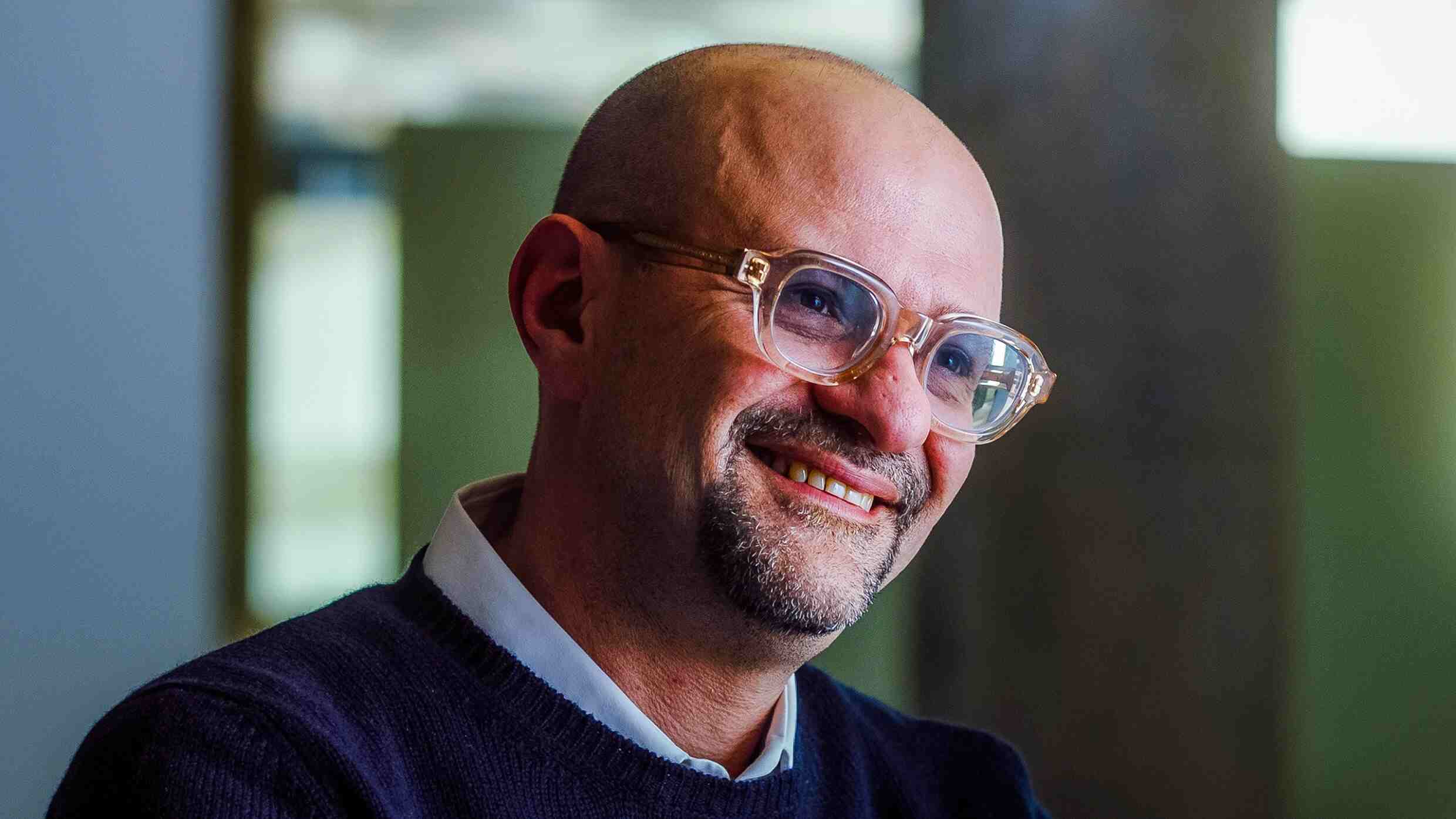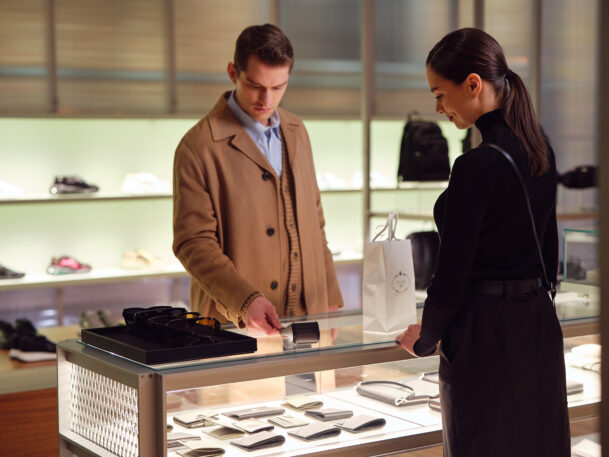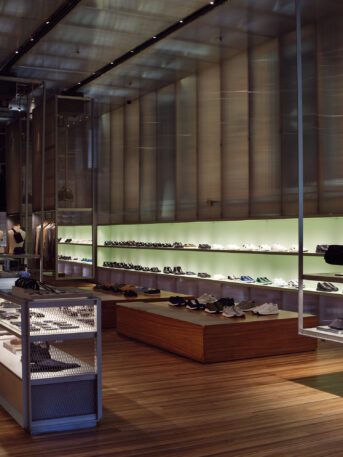- | 9:00 am
Prada’s vision for the future of fashion? AI helpers and metaverse handbags
We spoke with Christiano Agostini, Prada’s head of technology, on how the luxury brand is preparing for the future.

When Christiano Agostini joined Prada in 2021 as chief innovation officer, he was tasked with completely overhauling the company’s technological systems.
Prada had just been through the worst of the pandemic, when consumers couldn’t go to stores and had to shop online. This period made it clear that the company needed to equip itself with technology, so it would be prepared for the digital future. “It’s now clear that customers want to shop in store,” Agostini says. “But we didn’t know if that would happen. Either way, we needed to be prepared for the future.”
So Agostini and his team mapped out a plan that involved some immediate steps, like improving the brand’s website and payment systems—but also exploring the technologies of the future, including everything from generative AI to the metaverse. Over the past two and a half years, he’s worked to transform Prada’s systems, often in ways that aren’t visible to the customer but make a noticeable impact on their shopping experience. For instance, thanks to Prada’s partnership with the payment platform Adyen, customers can buy a product in store without even going through a checkout.
Here’s how he’s thinking about the future of technology in luxury fashion.

One of the things you’ve been working on is making the payment system more seamless. So what happens when I go into a Prada store and want to buy a handbag?
When you come into the store, the sales assistant will be working on a mobile device. They might even be able to recognize you if you give them your name, so they know if you’ve shopped before and what your tastes are, so they can help you find what you are look for.
Then, when you find something you like and you want to buy, you touch either your credit card or your iPhone on their device, and you’re done. You can walk out of the store with your product. It’s meant to be an incredibly quick and completely seamless experience.
When you think of the luxury industry, you tend to think of high-touch experiences and well-crafted products. How do you see technology fitting into that?
When customers come to us, I think they’re buying more than a well-crafted product. They’re also interested in having a highly tailored experience. And I think we have an opportunity to use technology to enhance this experience. For instance, we can use data to better customize the experience to the customer, both in-store and online, so we’re offering them the right product at the right moment. The customer doesn’t necessarily know that we have all this information at the backend; they just get more informed service from the sales assistant.
When someone shops in store, there are so many ways to create a highly immersive brand experience. But when they’re shopping online, you’re just one digital store among many. How do you create a really special online experience?
We’re obsessed with creating a stunning user experience online. We have rigorous guidelines about everything, from the colors we use and the fonts, so that when you see the site you immediately see Prada’s DNA. We think very deliberately about what order we display the products, so we control which images the customer sees first, much like we would do in the store.
But it’s not just about the aesthetics. We also make sure that there are very few moments of noise or distraction: So payments need to be seamless, exactly the way they would be in store.

Part of your challenge is creating a global experience, but people’s experience of the internet is so different depending on where they live. What have you noticed are the main differences between how people in Asia engage with e-commerce compared to Europe and the USA?
In Asia—particularly China—the experience is completely different because you’re in an entirely different ecosystem. There is one unified e-commerce system on your mobile device. Imagine you open your phone and there is a single platform that hosts every aspect of your shopping experience: the products, the payment method, the interaction methods, the chat. And many customers now buy products entirely through chat.
Here in Europe and there in the United States, these aspects of the experience are all different. The website is hosted on one platform, the checkout on another, and the chat on yet another.
This has many implications. Over there, your mobile phone number is the key to your entire identity online. Once you open your phone, that single identity then allows you to be immersed in this entire experience. Here, you might log in with your email, then add a credit card number when you pay. So it’s really important for us to have technology that is able to work across all these geographies.
There’s a stereotype that luxury consumers are older because older generations have more disposable income. Is that true? And if so, how does this affect your approach to technology?
When I joined Prada, I assumed that our consumer base was older because that is what you imagine with luxury goods. But it was absolutely not true. Our consumer base is quite a lot younger than I imagined. And in our stores, we’re starting to see younger generations come in. So we’re seeing a continuous movement towards younger consumers, and this means we need to be thinking about how they engage with technology.
How do you determine what technology to pursue?
We’re exploring everything. We’re always challenging ourselves to understand the newest technology out there. And recently, we’ve looked at all the big trends. After we’ve looked into it, we don’t always pursue it, but it’s always worth the exploration.
When there was the big metaverse moment, we tried to understand whether we could be part of that. We experimented with creating skins for Roblox and Fortnight spaces. Then we were looking at NFTs, and releasing NFTs linked to our monthly collections.
Now, we’re in the moment of artificial intelligence. We’re trying to figure out if we can move from traditional commerce to a more conversational interaction. Could the customer ask a question and then receive a list of products generated by artificial intelligence, much the way you would if you were interacting with ChatGPT.
How do you determine whether it’s worth investing in this technology?
I wish that I could say that we write out a business case for each of these technologies and think about the economic implications for the brand. But sometimes, that kind of research is not that relevant when talking about new technology. Sometimes, we need to go based on instinct. We need to try it.
We never start with a huge pilot. We test things and when it starts to work, we scale it quickly. Because the reality is that none of us is able to perfectly predict the future, so we need to be trying everything.





































